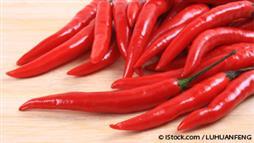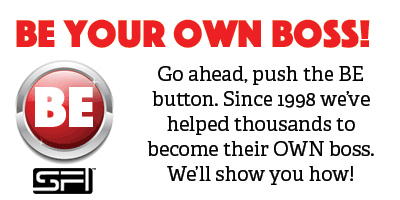 |
Image Credit: media.mercola.com
|
Research has recently discovered that hot chilies
may help soothe your gut when you suffer from inflammatory bowel disease (IBD).
IBD is not to be confused with inflammatory bowel syndrome (IBS), which is a
less serious functional disorder that doesn't cause ulcers or intestinal damage
as does IBD.
IBD is an autoimmune condition that may have serious
consequences. Currently there are nearly 3 million Americans who suffer from
IBD, with nearly 70,000 new cases diagnosed each year. This is nearly triple
previous estimates, which may be due to a combination of rising rates and
improved diagnostic criteria.

The rising rates of the condition may be related to
genetics, environmental factors, diet and changes in your gut microbiome.
Research has demonstrated your microbiome is so important that physicians may
even use it as a diagnostic tool.
While improving your microbiome plays a significant
role in reducing or eliminating your symptoms, capsaicin and endocannabinoids
may also play a role in reducing your symptoms through control of your
neuroimmune axis. Before understanding how it works, it's helpful to understand
the condition.
What Is Inflammatory Bowel Disease?
IBD is a chronic inflammation of part or all of your
intestinal tract that may result in ulcerations, vomiting, bloody diarrhea and
weight loss. The condition is often debilitating and may lead to a
life-threatening situation. There are two different types of IBD: Crohn's disease
and ulcerative colitis (UC).
UC is generally more common in men, while more women
suffer from Crohn's disease. Both forms of IBD are more common in developed
countries, while ex-smokers and nonsmokers more commonly have UC, and smokers
more commonly develop Crohn's.
People who experience UC will often suffer from
ulcers and inflammation in the lining of the large intestines, while Crohn's is
a disease that affects your entire digestive tract. Doctors believe your
symptoms are the result of widespread recurring immune response focused in your
intestines.
Your immune system mistakes substances in your
intestines for a foreign material and sends out white blood cells that trigger
inflammation. Without significant changes to your lifestyle, symptoms continue
to get worse and affect your quality of life.
Unfortunately, the symptoms are often associated
with stigma, fear and isolation that have resulted in the disease being
relatively hidden and people suffering in silence. While there is no real cure
for the condition, there are strategies that may reduce or eliminate your
symptoms.
Why Hot Chilies May Calm Your Gut
Recent research has found when mice were fed
capsaicin, the substance in chili peppers that makes them "hot," they
had less inflammation in their gut — and some were even cured of a mouse model
type 1 diabetes Researchers found capsaicin acted on receptors, causing local
production of anandamide.
Anandamide acts through your cannabinoid receptor 2
(CB2) that increases the number and function of immune macrophages in your gut.
You have endogenous cannabinoids or endocannabinoids produced in your system
from glycerophospholipids. Anadamide is an endogenous intestinal cannabinoid.
It controls your appetite and energy balance through
the nervous system in your intestinal tract. This study uncovered the
immunological role anandamide and endocannabinoids play in the regulation of
immune tolerance in the gut, and in maintaining immune homeostasis between the
nervous and immune systems.
Following the discovery of endogenous cannabinoid
production in the mid-2000s, a large number of studies exploring the system and
regulatory function were initiated, as scientists were hopeful for a
pharmaceutical approach to health.

Interactions in the endocannabinoid system are much
like those that occur in the brain, as your gut has a very large nervous system
affected by the endocannabinoids produced after ingesting chili peppers.
Researchers question if people who use edible cannabinoids may experience the
same relief.
Article Source: Dr. Mercola at
http://articles.mercola.com




